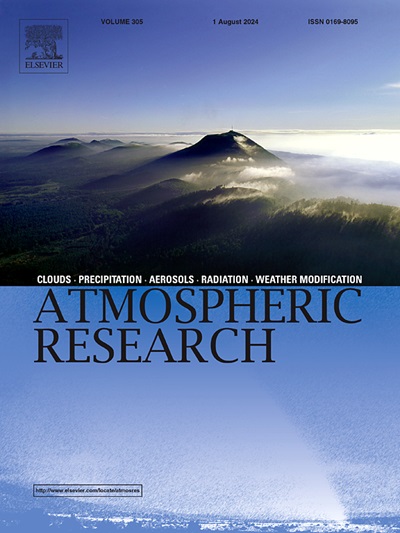Changes in large-scale circulation behind the increase in extreme heat events in the Apennines (Italy)
IF 4.5
2区 地球科学
Q1 METEOROLOGY & ATMOSPHERIC SCIENCES
引用次数: 0
Abstract
This study, using a dataset consisting of in-situ daily temperature records and ERA5 reanalysis data, analyses the extreme temperature events (i.e., heat waves and warm spells) occurred in the Apennine Mountains (Italy) over the period 1961–2022. The available dataset has been employed to meet the following two main goals: i) to assess the linear trends of the heat waves and warm spells in terms of number of events, duration, and severity by applying the Seasonal Kendall test; ii) to shed light, on a seasonal basis, on the synoptic climatology of such events. From the linear trend analysis, it emerged that the Apennines, as many other regions of the world, experienced an increasing trend in extreme temperature episodes. In particular, in the last 30-year reference period (1991–2020), the number of regional extreme heat events increased by 134 % in summer and 102 % in spring compared to the 1961–1990 period, while in winter and autumn the increase in warm spells is smaller (53 % and 27 %, respectively) and generally not statistically significant in terms of duration and severity. Using Principal Component Analysis and k-means clustering, several synoptic-scale patterns that can trigger extreme hot conditions in the study area are identified. In the last 30-year period, notable changes in the synoptic climatology of extreme heat events have been detected in summer, as well as in spring and autumn. Specifically, in summer the large-scale patterns characterised by a cyclonic area over the eastern North Atlantic (over the British Islands or off the coasts of Ireland) and by a ridge from North Africa to the eastern Europe provide a larger relative contribution to the total number of events. Such patterns promote the advection, over the study area, of hot subtropical air masses, mainly at mid-tropospheric levels. Summer heat waves in the Apennines are generally preceded and accompanied by negative sea surface temperature anomaly with a negative tendency in the eastern North Atlantic area.
Such results supply new insights about the links between extreme heat events in the central Mediterranean area and large-scale atmospheric types as well as useful tools to improve the predictability of heat waves and warm spells at both meteorological and climatological time scales.
求助全文
约1分钟内获得全文
求助全文
来源期刊

Atmospheric Research
地学-气象与大气科学
CiteScore
9.40
自引率
10.90%
发文量
460
审稿时长
47 days
期刊介绍:
The journal publishes scientific papers (research papers, review articles, letters and notes) dealing with the part of the atmosphere where meteorological events occur. Attention is given to all processes extending from the earth surface to the tropopause, but special emphasis continues to be devoted to the physics of clouds, mesoscale meteorology and air pollution, i.e. atmospheric aerosols; microphysical processes; cloud dynamics and thermodynamics; numerical simulation, climatology, climate change and weather modification.
 求助内容:
求助内容: 应助结果提醒方式:
应助结果提醒方式:


